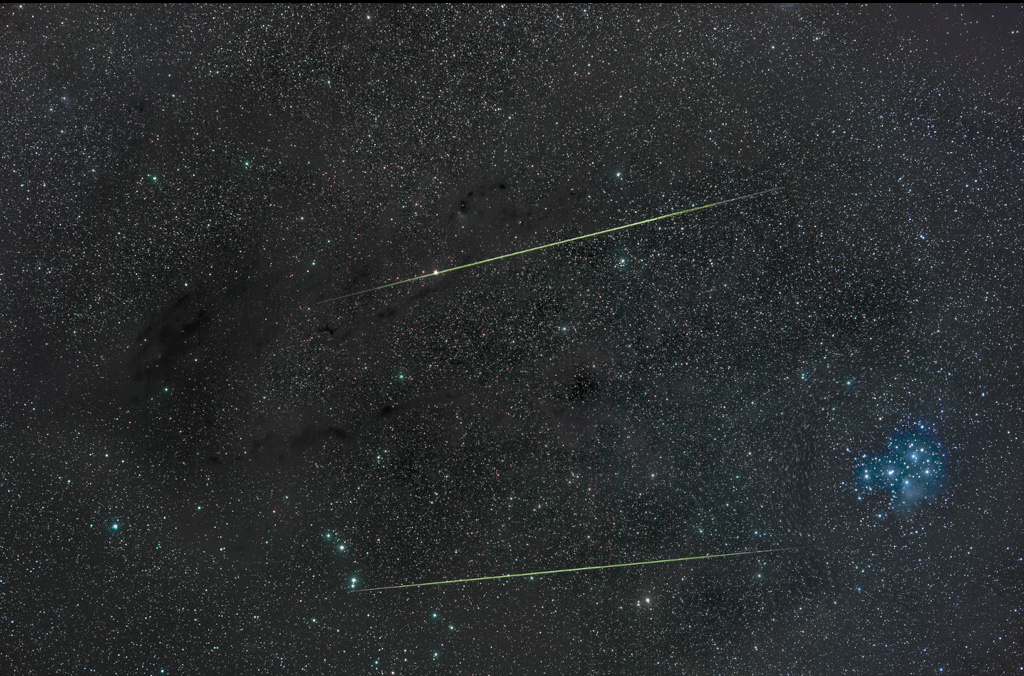2023年10月26日
Orionids in Taurus
Image Credit & Copyright: David Cortner
Explanation: History’s first known periodic comet, Comet Halley (1P/Halley), returns to the inner Solar System every 76 years or so. The famous comet made its last appearance to the naked-eye in 1986. But dusty debris from Comet Halley can be seen raining through planet Earth’s skies twice a year during two annual meteor showers, the Eta Aquarids in May and the Orionids in October. In fact, an unhurried series of exposures captured these two bright meteors, vaporizing bits of Halley dust, during the early morning hours of October 23 against a starry background along the Taurus molecular cloud. Impacting the atmosphere at about 66 kilometers per second their greenish streaks point back to the shower’s radiant just north of Orion’s bright star Betelgeuse off the lower left side of the frame. The familiar Pleiades star cluster anchors the dusty celestial scene at the right.
Tomorrow’s picture: 2P/Encke
掠过金牛座的猎户流星
影片提供与版权: David Cortner
说明: 人类所发现的首颗周期性彗星哈雷(1P/Halley),每76年左右会回访太阳系内围。这颗著名的彗星,上次肉眼可见的回归是在1986年。不过,来自哈雷彗星的尘埃碎片,每年有2次会洒落地球的天空中,形成5月的宝瓶流星雨和10月的猎户流星雨。而在10月23日清晨用一系列舒缓曝光所拍下的这幅影像,以金牛座繁星及金牛分子云为背景,记录了汽化的哈雷尘埃碎片所产生的2颗明亮流星。这些以每秒66公里高速撞击地球大气的碎片,其泛绿的流星痕回指这片视野左下缘外头、猎户座亮星参宿四北侧的流星雨辐射点。在这片尘埃浓密的夜空视野里,熟悉的昴宿星团是其中最醒目的天体。
明日的图片: 2P/Encke







